.
Yunosawa-toge 湯ノ沢峠 – Mt. Okuratakamaru 大蔵高丸 – Mt. Takigoyama 滝子山
Distance: 23.8 km
Elevation change: 1181 metres
Highest point: 1781 metres
Start: Yamatoten Mokusan Onsen Bus Stop
Finish: Sasago Station (Chuo Main Line)
Difficulty: ▅▅▅▅▅▅▅▅▅▅ ❹
Map: Yama to Kogen Chizu 山と高原地図 [No.26 大菩薩嶺 DAIBOSATSU-REI]
GPX TrackKML TrackGSI MAPPDF Topo Map
Hiking the Koganezawa Mountain Range.
Mt. Hamaibamaru is located deep in the heart of the Koganezawa mountain range and is one of Otsuki City’s 12 Beautiful Views of Mt. Fuji. It was apparently named after the local people of Maki Village, who performed a Shinto ritual involving the shooting of hamaya, or ceremonial arrows, used to drive off evil spirits. The mountain is most commonly approached from either Yunosawa-toge or Komeshoi-toge, starting from Yamato Tenmokusan Onsen. You can read about my first attempt at this hike back in 2014 here.
Day 1: Steep Climbs and Scenic Fuji Views (13.9 km)
On weekends, public holidays, and selected weekdays, three morning buses depart from Kai-Yamato Station 甲斐大和駅 on the JR Chuo Main Line to Yamato Tenmokusan Onsen やまと天目山温泉, with the first one leaving at 8:10 am. However, additional buses often operate, especially on popular hiking days. Remarkably, since I first took this bus over 10 years ago, the fare for the 15-minute trip has remained unchanged at 300 yen.
By the time the train arrived at Kai-Yamato a little after 7:30 am, many passengers had already crowded into the front carriage, preparing for what could only be described as a scene akin to the Running of the Bulls. I found myself somewhere in the middle of the pack as we made our way up the concrete stairs, which quivered under the strain of countless hiking boots – a fortunate position, as the three waiting buses filled up quickly.
From Yamato Tenmokusan Onsen, cross the road and follow a minor road towards Yunosawa-toge 湯ノ沢峠. This road runs alongside a river, passing a small shrine, and it should take about 90 minutes to reach the well-signposted trailhead, which also has a local area map. From there, it’s another hour or so to reach Yunosawa-toge.
The day before this hike, a typhoon passed through the area, which meant removing my shoes and socks for the first stream crossing and awkwardly navigating the other half dozen or so crossings. Just before reaching the refuge hut, look for a watering hole on your right. Be sure to fill up here, as it’ll save you a 20-minute round trip later to collect water at Komeshoi-toge. Another hiker I met on the way mentioned that there was a large trail-running event underway with a rest area set up at Yunosawa-toge. For the next few hours, I had to make way on the path for a steady stream of runners who slipped past.
At Yunosawa-toge, turn right and pass through a deer-proof fence. The highlight of the autumn season is the stunning susuki (pampas grass) field, which glows beautifully in the sunlight. A short climb leads to Mt. Okuratakamaru 大蔵高丸 (1,781 m), one of the five peaks in the Koganezawa mountain range 大蔵高丸 included in Otsuki City’s 12 Beautiful Views of Mt. Fuji. The wonderful view of Fuji-san here makes a great spot to have lunch.
The next destination is Mt. Hamaibamaru (1,751 m) ハマイバ丸 or 破魔射場丸 in kanji. The trail is mostly flat and easy to follow. From here, the trail loses elevation as it makes a steep descent to Komeshoi-toge 米背負峠. At one point, the trail becomes extremely steep; it caused me to take a tumble and abandon the hike on the previous occasion. Soon, look out for the Tenka-ishi 天下石, a mysterious-looking boulder. Once you enter the forest, you’ll soon reach Komeshoi-toge, where you can exit to Yamato Tenmokusan Onsen via a forest road. A water source is located 10 minutes away.
After reaching Mt. Oyagamaru 大谷ヶ丸 (1,644 m), which doesn’t offer any views, the trail from Mt. Oyagamaru to Mt. Takigoyama becomes quite unclear, especially in the saddles where flat plains spread out. Fallen trees also present obstacles, making it easy to lose the trail. A good place to camp is near the trail junction to Mt. Takigoyama, which offers nice views to the west.
Day 2: Snowless Fuji and Fiery Fall Colours (9.9 km)
Overnight, the still air changed to a fresh breeze, and I left the improvised campsite before 6:00 am. The trail becomes more defined as it joins the well-trodden path to the summit. A short walk led to Chinseiga-ike 鎮西ヶ池, a small pond beside a shrine. The summit of Mt. Takigoyama 滝子山 (1,610 m) is a narrow ridge, offering limited space. Ominously, even in early November, Mt. Fuji was still snow-free. After admiring the panoramic views, return to the trail junction to begin the 1,000-metre descent to Sasago Station 笹子駅.
Being the start of November, the fall colours were at their peak and particularly beautiful along the Sumi-sawa すみ沢. After passing the remnants of what appears to have been a former teahouse, you’ll find a turnoff leading to some waterfalls. I considered trying this alternate route, but as it wasn’t clear how to proceed, I opted instead, as on the previous occasion, for the ukairu 迂回路, or detour. After the trails converged again, I did a short recce to check out Mochiga Falls モチが滝. A couple of bridge crossings then lead to the trailhead proper at Michiakashi-jizo 道証地蔵. From here, it’s an hour of walking along paved roads to Sasago Station.
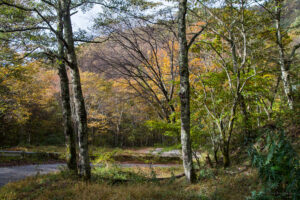
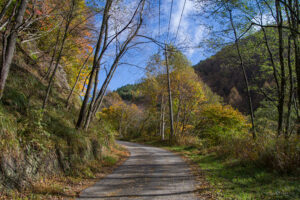
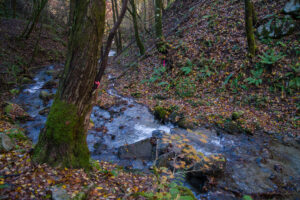
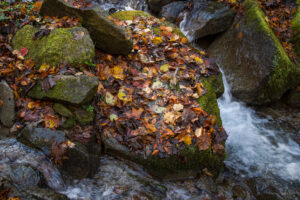
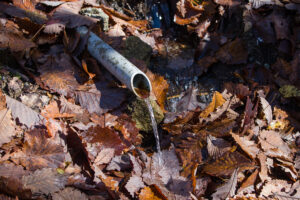
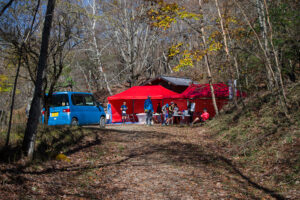

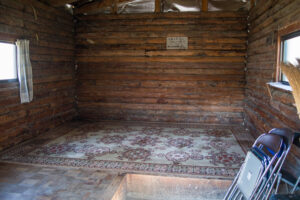
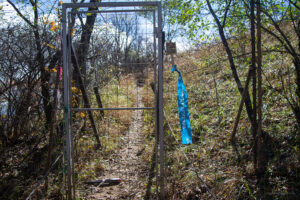
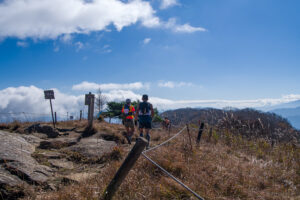
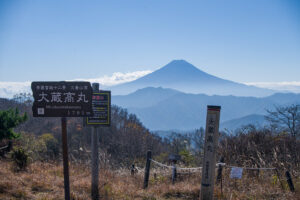


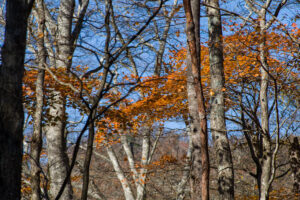
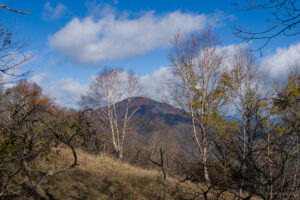
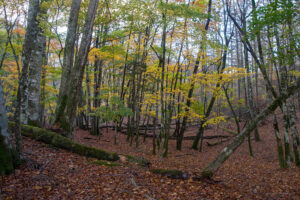
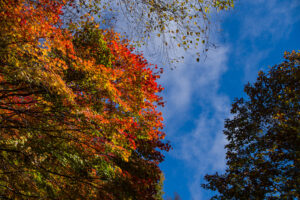

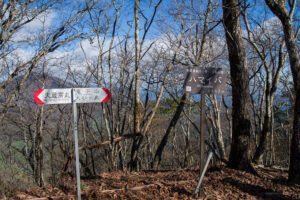
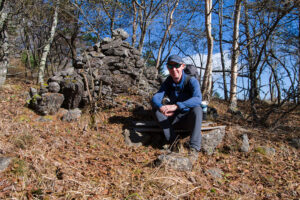

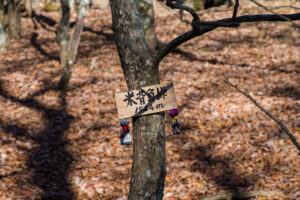
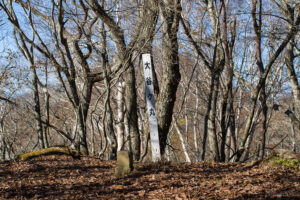
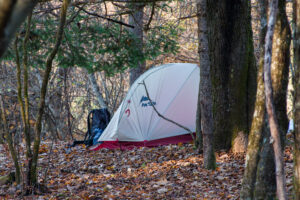
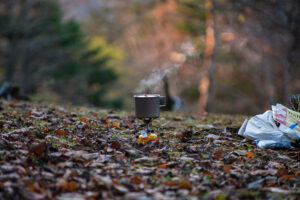
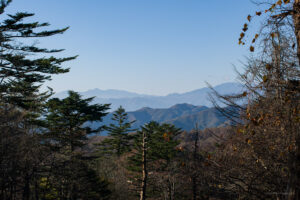
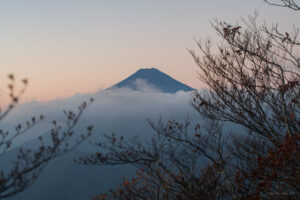
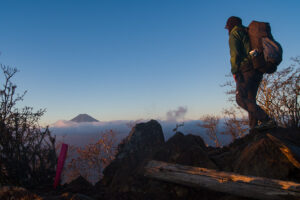
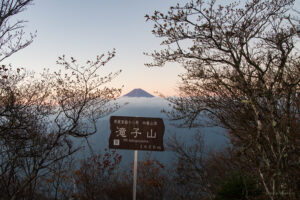
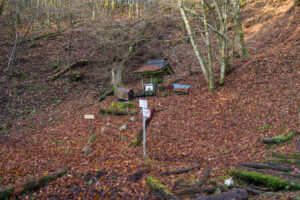


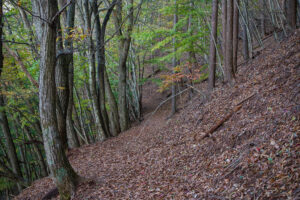

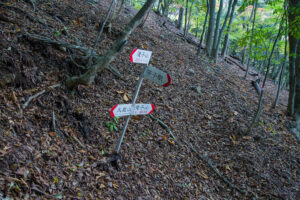
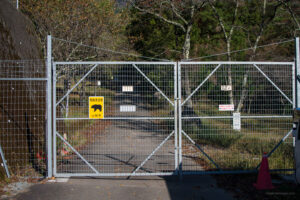
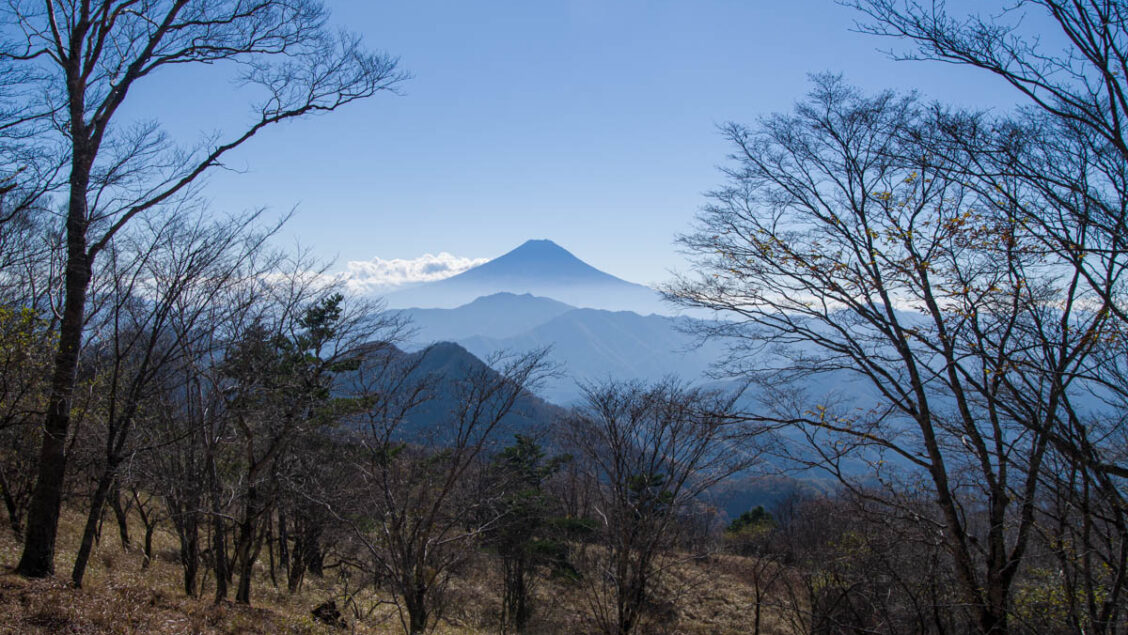





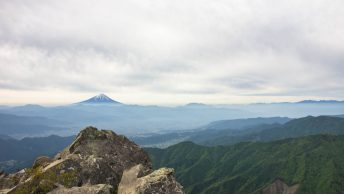
This was nice to see. I have been in that area many times and really enjoyed some of those mountains between Yunosawa Pass, Daibosatsurei, Gangahari and Takigo. Most of the time I made the long trip to the hut at Yunosawa Pass on my little scooter. Some of those mountains are really, really nice.
Cheers, Pat. It’s such a nice and accessible spot that offers excellent views. This was my third time hiking up from the onsen and camping out on the ridgeline. There’s always something new to pique my interest, and I can see myself making many more trips there in the future.